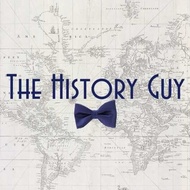
Join The History Guy from YouTube in conversation about his videos and various topics in history. Here you can find behind-the-scenes peeks of the set and The History Cats. Share ideas for future videos or ask questions of both the community and The History Guy himself. Early releases and the occasional extras are available for supporting members.
Around 8:30 AM on April 16, 1947, a large column of smoke started billowing from a ship at the port in Texas City, Texas. Forty minutes later, the ship exploded. In the hours that followed, the scale of the disaster became clear - what is generally considered to be the worst industrial disaster in American history.
The Reconquista, or Christian reconquest of Iberia, took nearly 800 years. The fighting did not come without great attempts by Muslim powers across the strait trying to reestablish their presence in mainland Europe. The last gasp of that effort came in the 1330s, when the powerful Marinid sultanate of what is modern Morocco invaded in an attempt to reverse Christian gains and secure the perilous position of the Sultanate of Granada.












